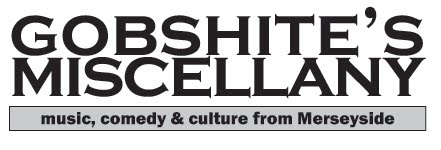
Studs Terkel at the mic, circa 1960 (photo: Russ Arnold), pic here
THE great Chicago author, disk jockey and social historian Studs Terkel was the senior keeper of the annals of the American left for the majority of the 20th Century.
He was a rare beast in terms of the modern media - a man equally concerned with interviewing the ordinary working American as he was with locking horns with global leaders or celebrities.
A prominent civil rights campaigner and target for the House on UnAmerican Affairs Committee, he was a committed Socialist and stood by his politics even when he it cost him work in the early 1950s.
He was best known for The Studs Terkel Program which ran daily on radio station 98.7 WFMT Chicago between 1952 and 1997. He interviewed thousands of guests during that time from Martin Luther King to Bob Dylan and Leonard Bernstein. He asked difficult questions and nearly always got great answers.
His writing career began with a portrait of jazz legends in 1956 and went on to bag a Pulitzer Prize for his legendary book The Good War in 1985.
He continued to write and campaign to the end of his life. He campaigned for health care in 2007 and welcomed the probable election of fellow Chicagoan Barack Obama as President in 2008.
He didn't get to see that historic night for the US but in many ways it was the perfect ending for a life that had been so involved in civil rights and the advancement of rights for the black community.
He died at home at the age of 96 in October 2008 but has left a mountain of books and recordings to guide the way of young journalists wanting to know just how to do it. Maybe if we follow his optimistic and committed example and see the inherently interesting nature of all humans and not just so-called celebrities, then may be new hyper localised form of news media will emerge as voice for all of us.
The Chicago History Museum and the city's historical society have joined forces to produce this remarkable website with transcripts and excerpts from some of his many thousands of interviews of the years, with the wonderful title Conversations with America
He set a standard for all broadcasters in his commitment to finding the real story behind the lives of ordinary people, believing these stories were as valuable as the lives of popes, presidents or pop stars.
Fittingly it is a response to one of his millions of questions that sums up Studs to me. He asked award winning stage actress Uta Hagen about faith, her response could have been about the great man himself.
He didn't get to see that historic night for the US but in many ways it was the perfect ending for a life that had been so involved in civil rights and the advancement of rights for the black community.
He died at home at the age of 96 in October 2008 but has left a mountain of books and recordings to guide the way of young journalists wanting to know just how to do it. Maybe if we follow his optimistic and committed example and see the inherently interesting nature of all humans and not just so-called celebrities, then may be new hyper localised form of news media will emerge as voice for all of us.
The Chicago History Museum and the city's historical society have joined forces to produce this remarkable website with transcripts and excerpts from some of his many thousands of interviews of the years, with the wonderful title Conversations with America
He set a standard for all broadcasters in his commitment to finding the real story behind the lives of ordinary people, believing these stories were as valuable as the lives of popes, presidents or pop stars.
Fittingly it is a response to one of his millions of questions that sums up Studs to me. He asked award winning stage actress Uta Hagen about faith, her response could have been about the great man himself.
Hagen: [...] That I am truly religious about. Oh my God, I think that the faith, the miracle of creation is what a human being is capable of communicating. It's not a private thing, it has to be communicated. Which is what I love about art—that you pass on, you make an offering of your spirit to somebody else hoping that it will help them, enlighten them, make them laugh, make them cry. These are things that make our lives worth living as far as I'm concerned. To me, that's art. That's my religion.This brilliant documentary from Democracy Now is a fitting tribute to a great man.











